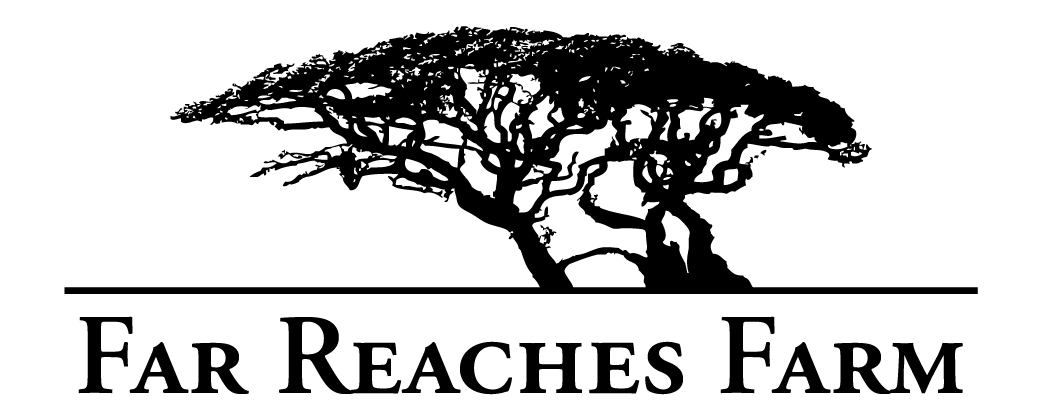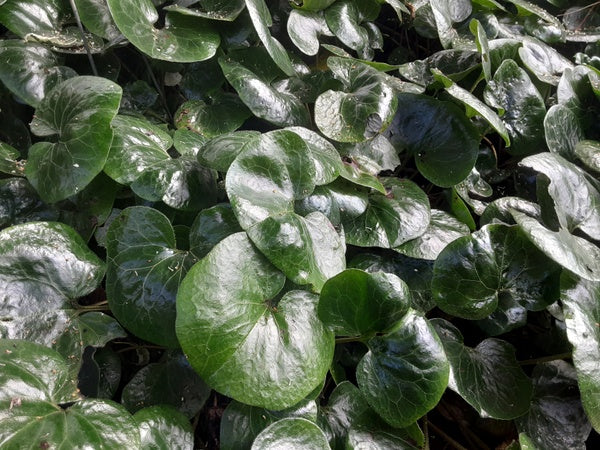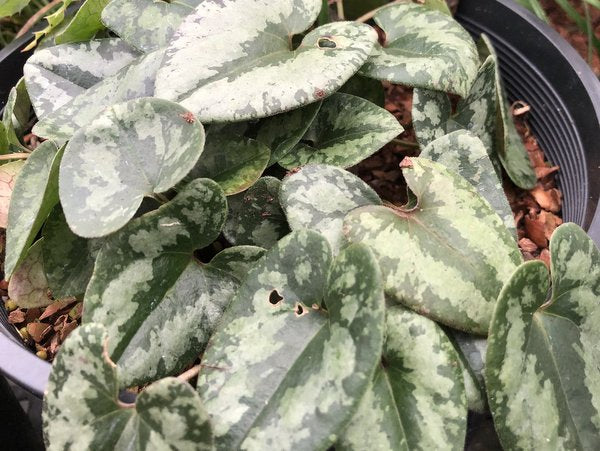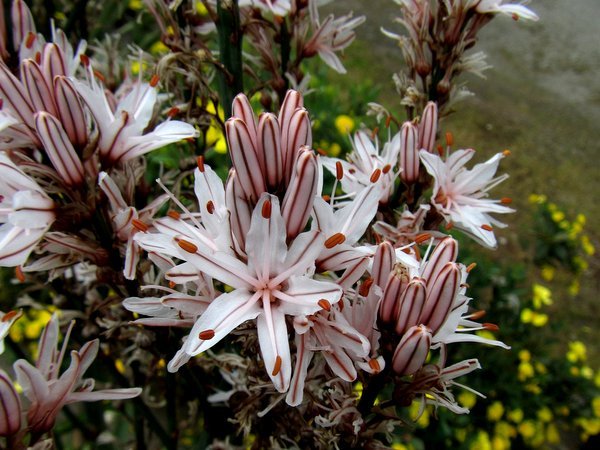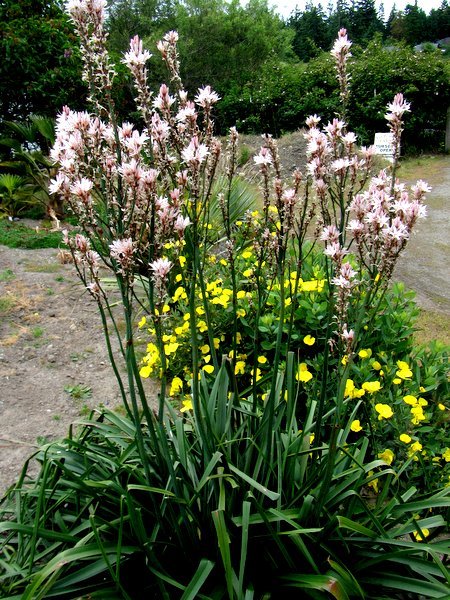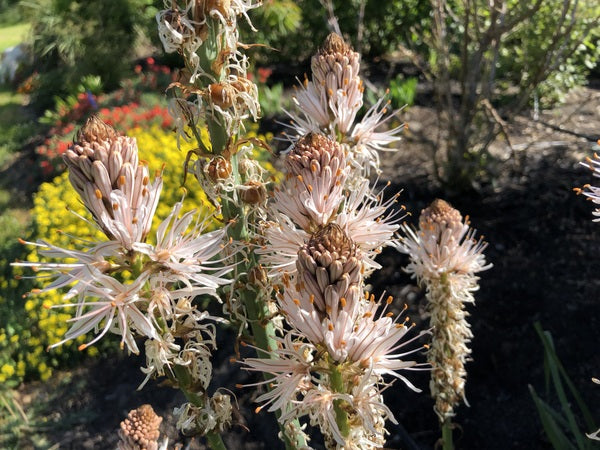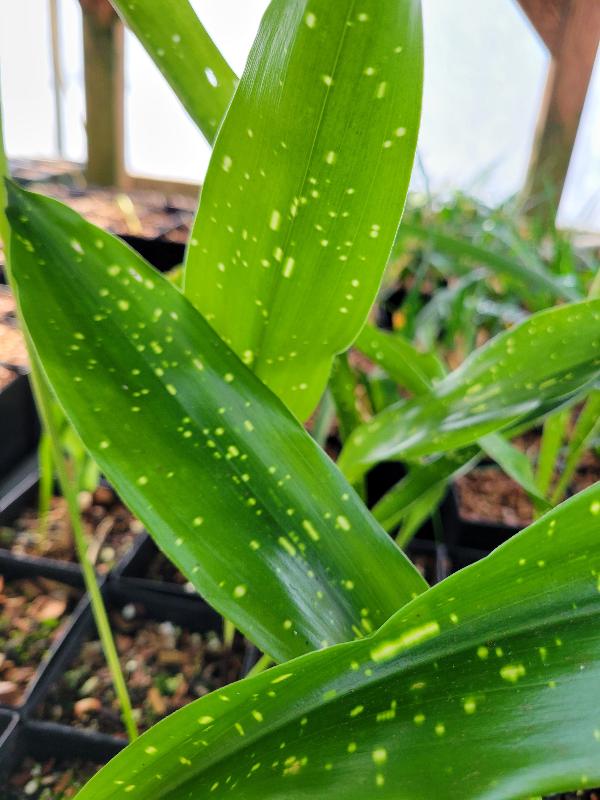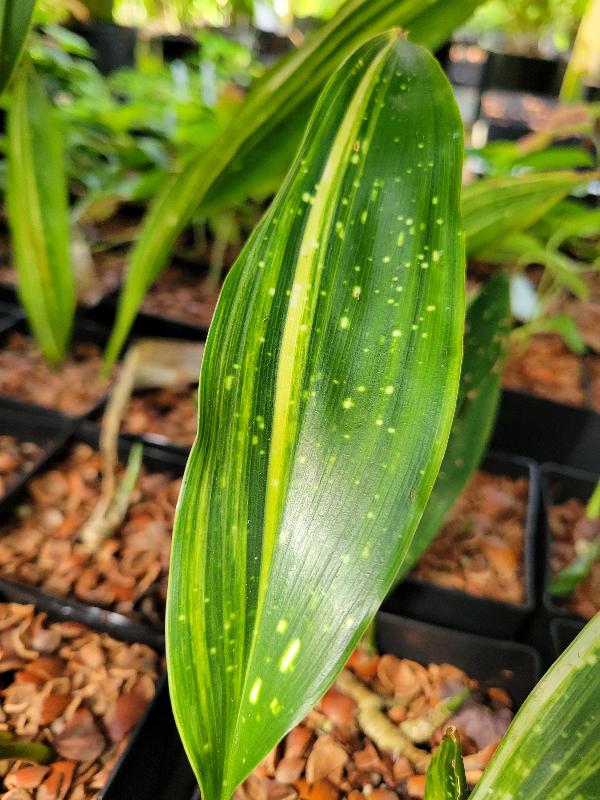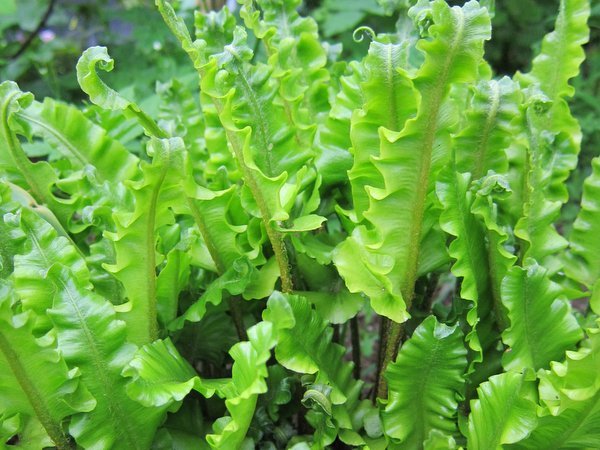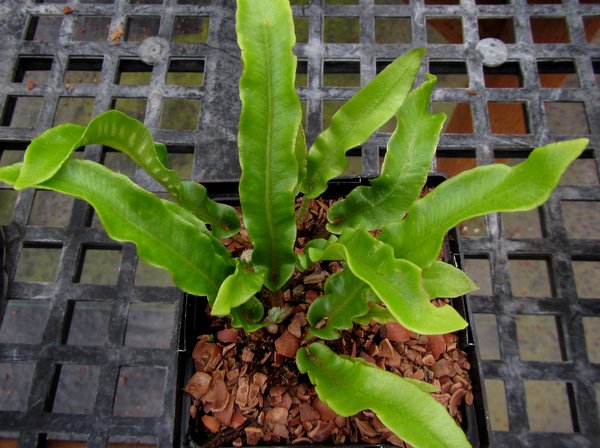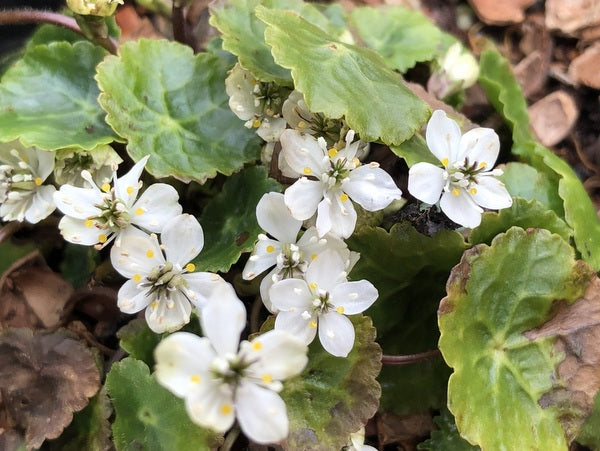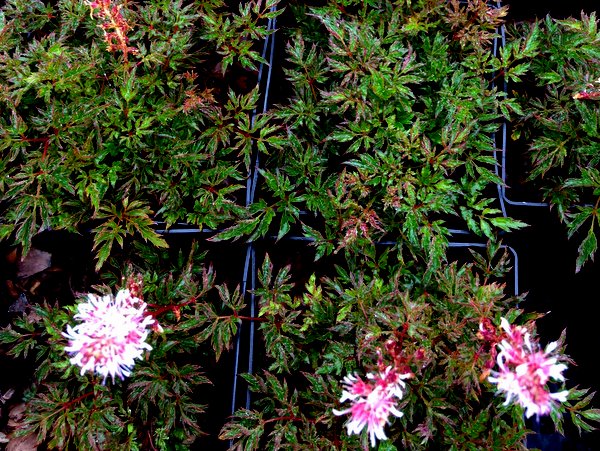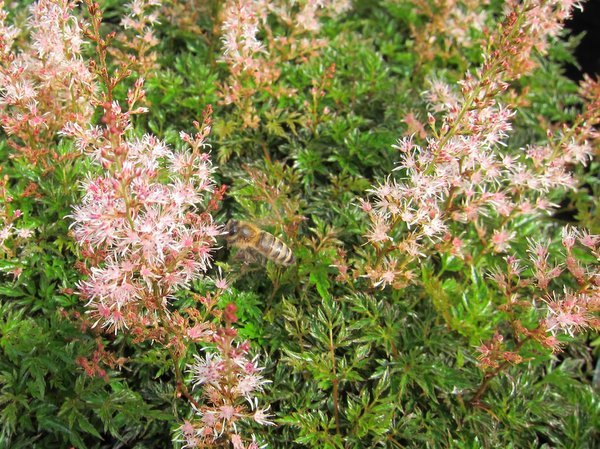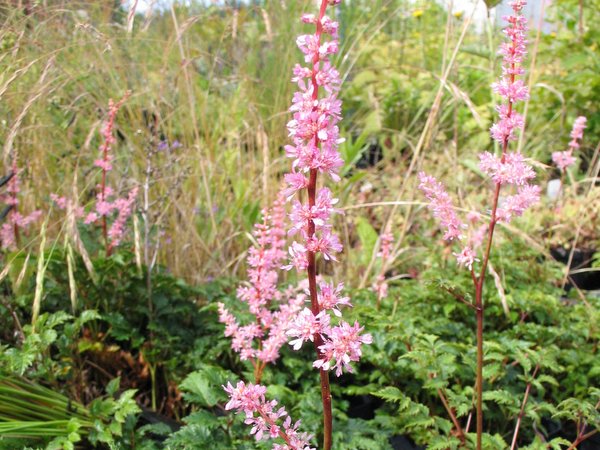Sort by:
1776 products
1776 products
European Wild Ginger. Rounded, heart-shaped most excellent evergreen leaves (evergreen in mild winters or our Z8 garden) hug the ground close and dense, hiding the small flowers and their lack of ornament We have a slightly darker leaf clone that is most apparently dark when planted next to this clone. We go the extra mile to ensure that you can have monochromatic integrity if you so desire!
A smaller Japanese Wild Ginger that eventually clumps quite densely. It looked good in our garden for many years but we dug it and potted it so we could share these and must plant some back. Small heart-shaped leaves with an irregular central green isthmus flanked on either side by a froth of silver. Small purple-brown flowers are not missed hiding under the fine leaves. This looks like the form from Mt Takao based solely on web photos from habitat. Wish we had our own photos from Mt Takao!
This has grown into one of our favorite plants. Much like an Eremurus or Foxtail Lily in effect with basal strappy leaves and a 4'-6' tall branched flower spikes in May and June with lots of pale peach tinted white flowers opening from reddish-striped buds. Longest-lived in sandy soils and late summer dormant.
White Asphodel. From Spain to North Africa and over to the Balkans, this has done very well for us in our garden. Narrow leaves in small clumps with flower stems 2'-3' tall and perhaps with greater maturity, to 4', and which bear showy starry white flowers. We also enjoy the darker round seed capsules which extends the interest. This will go summer dormant and isn't for the humid Southeast.
Pretty recently described species of Cast Iron plant from Jiangsu Province in China. Narrow evergreen leaves can hit 30" tall and makes a fine clump. Flowers will require some astute observation as they are odd purplish things open right at ground level - perfect for walkabout pollinators. Hardy down to Zone 7b and up to Zone 10 plus it makes a fine houseplant.
For some reason the evocative cultivar name of this Aspidistra really sells it for me, eliciting extra joy in conjuring up visions of exotic night skies via it's lovely variegated patterning of white dots in varying sizes and distinctness across a canvas of dark green evergreen blades up to 2.5ft tall. As with other aspidistras its tolerant of deep shade and does well as a houseplant (Houseplant with an astrological name, can you get more trendy?). This species is particularly tolerant of cold temps without burning and is also extremely floriferous if you're a botanically minded flower enjoyer who doesn't mind a curious stoop to view them.
Despite it's translation this is not to be confused with what is often sold as Aspidistra 'Milky Way' instead the leaves of this supremely variegated cultivar are painted in broad strokes of cream and white, further accented with the more commonly seen white speckling, creating an effect well deserving of the more literal translation 'Heavenly River'. As with other cast iron plants this is highly tolerant of deep shade, plays nice indoors, stands up to roving bands of deer and offers foliage bliss all year long.
Hart's Tongue Fern. A distinctive fern whose undissected pale green leaves sets it apart from its allies. A tidy evergreen compact clumper to 16" tall by 20"+ across which is easy to please and goes so well with Trilliums and Arisaemas. This one doesn't mind some alkalinity and we have seen this self-sowing on damp brick walls where it enjoys the good drainage. And it is rabbit resistant which we appreciate.
A narrow leafed version of the classic Hart's Tongue fern from Europe. We've seen the typical species happily growing in English hedgerows and closer to home, naturalizing on a shaded mossy brick wall at June Sinclair's garden. This form is quite striking with it's stiff, evergreen lance-shaped leaves tightly rippled and crimped on the margins and would be well suited to an artist's garden.
Crested Hart's Tongue Fern. Crested ferns are always fun and this one does provide some amusement in the garden. Rather than the typical evergreen, entire sword-shaped leaves which taper to a point, these crested forms splay out at the end into a rounded and ruffled flourish which might mark this as a self-indulgent dandy were it not for its complete absence of ego. More than happy to play a necessary supporting role to those blooming Trilliums for example. Doesn't mind a bit of lime and will self-spore in mortared walls.
Maidenhair Spleenwort. We love common names. We must dig out our 15th century Herbal and read up on how to properly decoct this sweet little fern for afflicting humors of the spleen. Or we can just grow it in a gritty well-drained shaded rock garden and enjoy its evergreen delicate appearance which belies its rugged constitution. This little fern grows throughout the northern part of the northern hemisphere and just has a small foothold in our North Cascades. One of our favorite sights of this fern was when we did the Coast to Coast walk in northern England in the epic rainy summer of 2012 and we walked close to 200 miles through the Lakes District and Yorkshire Dales and Moors. We saw this growing everywhere naturalized on old stone walls, stone bridges and stone buildings. Very attractive and a clue to its drainage preferences.
A very attractive introduction by us from Yunnan if we do say so. Broad lightly hairy leaves in a dense clump with lots of large soft lavender daisy flowers fringed heavily in very fine petals surround a prominent dark "cone". This steals the show in mid to late July here in our gardens. Karen, a friend of ours who has exceptional taste was strolling the gardens last night (July 20), saw this Aster blooming and said "I want that plant!". And she had barely touched her glass of wine so it was a completely valid assessment. When shipped in the fall, we'll need to cut this plant back.
One of the jewels in the tiara of shade garden royalty which is supposed to sound aristocratic and appealing and I believe it does. Put this little Chinese gem in a special spot where you can enjoy the white flowers over the patterned foliage. This would likely thrive in a moist rotting stump. Found up to 12000' in alpine meadows, we've also seen a tiny form in forests in Chongqing. These are from our own divisions.
A choice and very dwarf form of the species in which everything is extremely miniaturized. This makes a tightly packed dumpling of dense, tiny leaves with 4" sprays of light pink flowers. Quite ideal for the damp rock garden or trough as this is an alpine form of Astilbe glaberrima endemic to the mountains of Yakushima in Japan. We were curious as to what constitutes the typical form of A. glaberrima and with a bit of noodling, were able to access online the herbarium sheet of this species from 1922 which is the holotype that was the basis for the original description of the species and we saw that it is indeed, a much larger plant. Plants are such great things to be curious about!
A fine little dwarf Astilbe native to Japan and one that has proved to be very enduring as well as endearing. This is one Sue used to grow at her old place in northern Vermont and charmed her to the point that it made the cut and followed her out west lo those many years ago. Low mounds of dense and finely cut foliage with short spikes of soft pink fluff in early summer. We grow this out in the full sun with ample water.
Pencil Pine. Very interesting conifer from the highlands of Tasmania where it is threatened due to fires and degradation of habitat from grazing and too many Eucalyptus. The leaf scale are tightly appressed to the stem so the green branchlets do look very pencil-like. A moderate grower with old-growth trees 30'-60' but you won't have to worry about it - it takes a while.
